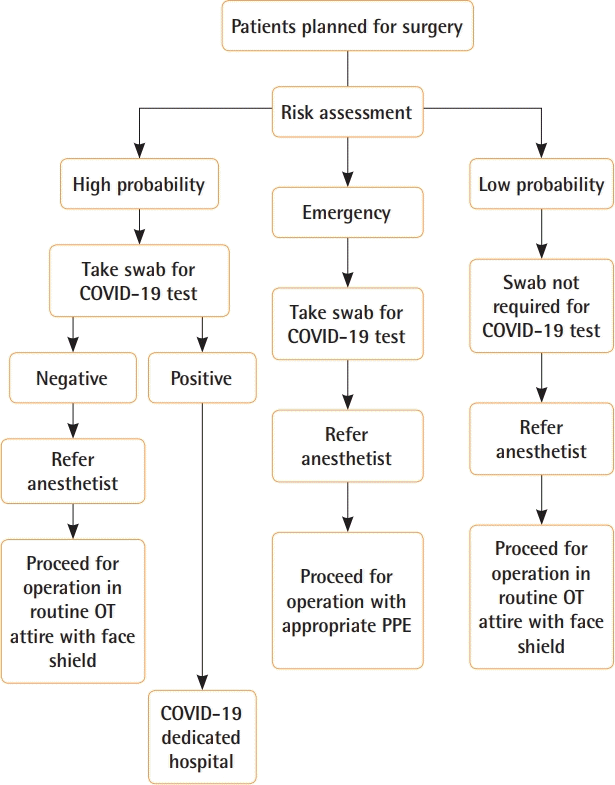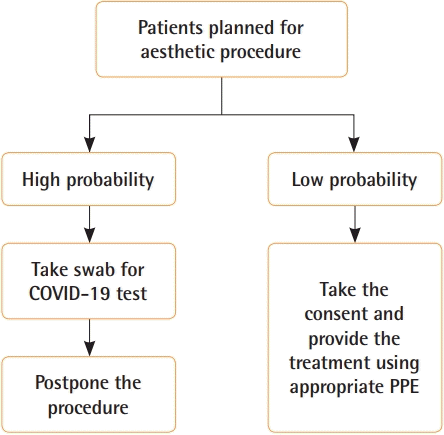“In the middle of difficulty lies opportunity.” Albert Einstein.
Introduction
In light of the recent coronavirus disease 2019 (COVID-19) pandemic, the Malaysian healthcare system has been required to readjust and reallocate medical personnel to facilitate patient care. As of June 3, 2020, there were a total of 7,970 confirmed COVID-19 cases in Malaysia, of whom 6,531 patients have recovered and 115 have died [1]. To accommodate patient care during this pandemic, 40 hospitals were designated for the treatment of COVID-19 throughout the country [2].
Our surgical services were immediately limited to emergency cases only. A study conducted by the College of Surgeons of the Academy of Medicine of Malaysia revealed that 70% of scheduled medical operations in Malaysia were cancelled as a result of the COVID-19 pandemic. The SARS-CoV-2 Surgical Collaborative study with the University of Birmingham in the United Kingdom demonstrated that the most strongly affected procedures were those for benign diseases (81.5%), followed by oncologic surgery (41%) and obstetric procedures (26.1%) [3]. It was also found that patients with SARS-CoV-2 (the virus that causes COVID-19) who underwent surgery experienced worse postoperative outcomes. The mortality rate among postoperative patients without SARS-CoV-2 was under 1%, whilst it was 16.2% among patients with SARS-CoV-2 requiring minor surgery and 18.9% among those requiring elective surgery [4]. Currently, the number of cases in COVID-19 in Malaysia is declining, but we should always remain vigilant for any surge in cases. Until a vaccine becomes available, all surgical specialities will have to follow a new norm. With the reduction in new COVID-19 cases, the time has come for us to re-commence elective plastic surgical services. However, the re-introduction of services will have to follow strict standard operating procedures and guidelines. This is essential to protect health care workers (HCWs) and to avoid overburdening the health care resources of the country.
Recovery plan
Assessment for surgical interventions
Currently, very limited published data are available on the prevalence of patients who test positive for SARS-CoV-2 during preoperative assessments. In Malaysia, out of 12,787 samples that were taken, only 0.1% of patients sampled were positive for SARS-CoV-2 [2]. Since re-establishing services is essential for maintaining public health, we propose the following, as shown below in Fig. 1. Patients are categorized into two categories, low and high probability, based on screening for their travel history, contact history (clusters/residential areas), and symptoms (upper respiratory tract infection, fever in the last 14 days, shortness of breath, anosmia). Only patients in the high-probability group are screened for COVID-19, and should they test positive, HCWs will be required to operate in full personal protective equipment (PPE) and to use a powered air-purifying respirator in the operating theatre. Patients with a low probability of having COVID-19 undergo surgery as scheduled, with HCWs gowned in normal PPE with the addition of a face shield.
Plastic and aesthetic clinic services
Strict scheduling is practiced for our patients to ensure no overcrowding at the clinic. Only scheduled patients are allowed to enter the clinic premises. All patients are required to undergo a thermal scan and are screened for travel history, contact history (clusters/residential areas) and symptoms (upper respiratory tract infection, fever in the last 14 days, shortness of breath, anosmia) prior to entering the clinic. Patients are then further required to maintain good hand hygiene with the provided hand sanitizer. It is also mandatory for patients to wear a facemask at all times. Further measures adopted to reduce the risk of infection during consultation and outpatient procedures include ensuring that all HCWs receive formal training on donning and doffing PPE [5,6].
Currently in Malaysia, aesthetic services have yet to resume. The proposed recovery plan will include a detailed guideline for the standard operating procedure for aesthetic practices. A summary of this plan is illustrated in Fig. 2 [7-10].
Telemedicine has been incorporated into majority of our patient treatment plans, allowing us to avoiding unnecessary close contact with patients and further facilitating community-based care. Heeding the COVID-19 guidance issued by the Ministry of Health Malaysia [2], we feel that this step limits unnecessary exposure of our patients to the hospital and vice versa. Furthermore, we are able to provide safe video-calling advice and consults for professional referrals.
Conclusions
As there are still many unanswered questions with regards to COVID-19, it is prudent for us to exercise the highest standard of precautions in keeping with our patients’ best interests. This is the dawn of a new normal; hence, moving forward, we must acknowledge that COVID-19 will continue to plague the world. However, we should not allow this fact to curb us from practicing medicine or living our lives.






